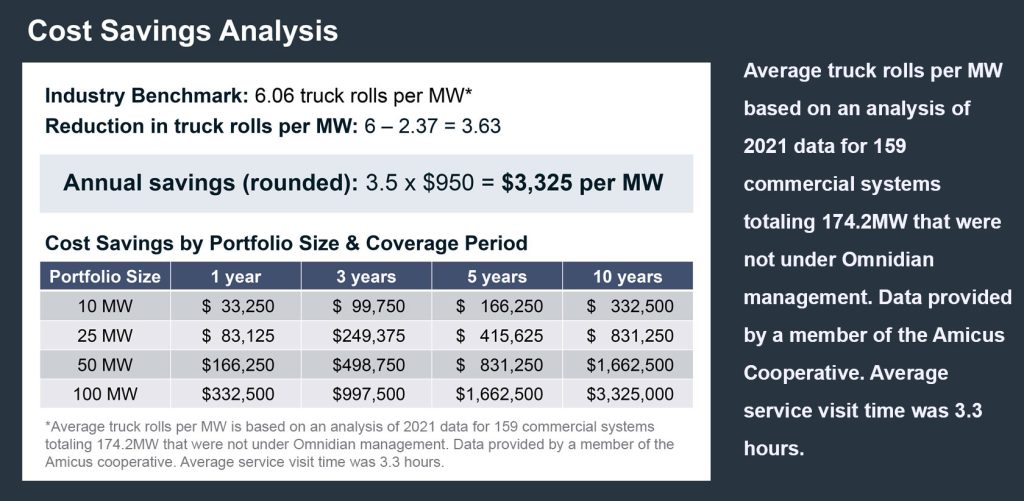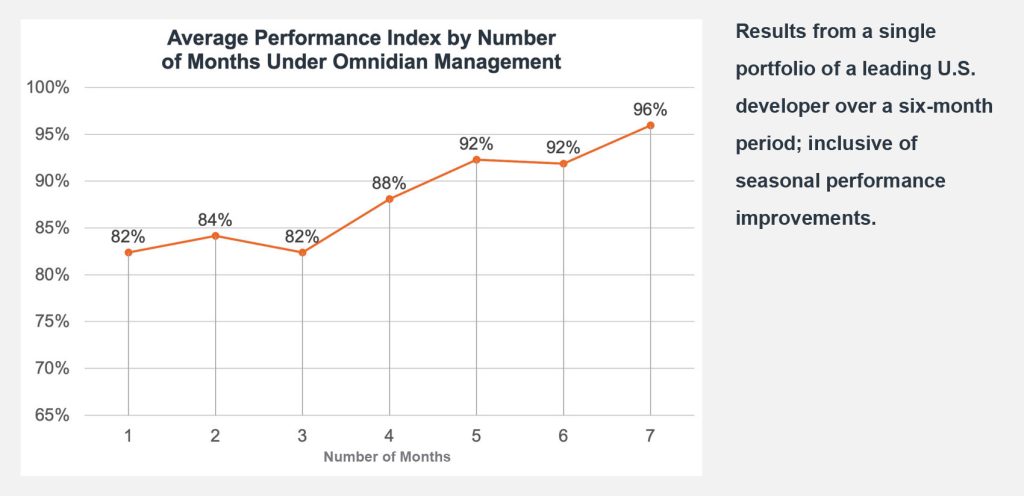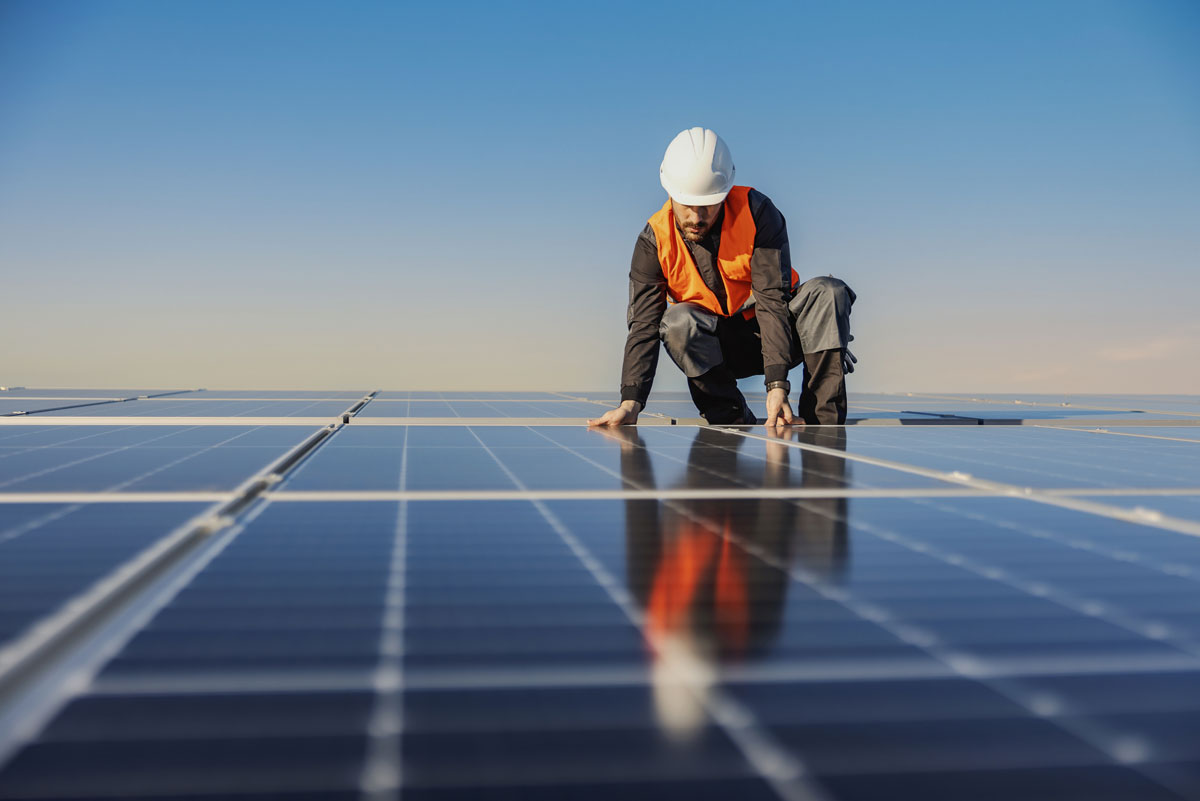Time is money in commercial & industrial solar – for solar installers, EPCs, and system owners. Unfortunately, PV system downtime, as well as operations and maintenance team inefficiencies, lead to lost revenue for all stakeholders.
The good news? Solutions have emerged to address C&I solar system performance pain points. Here are five common issues in commercial solar O&M, and how to solve them.
1. Alert! You have too many alerts
Visibility to alerts on potential issues with a PV system isn’t the problem. The opposite is more likely true, as the sheer volume of alerts can be overwhelming. This means:
- Trucks get rolled for false alarms or issues that could have been resolved remotely
- Important alerts aren’t noticed quickly enough or are missed altogether
Sifting through the noise is more complex than setting monitoring filters through your inverter or third-party monitoring system, because multiple conditions often overlap, such as:
- hardware failures
- shading and soiling
- weather-related underperformance (e.g. snow)
If you’re not quickly identifying the root causes of underperformance that lead to lost revenue, the good news is it’s not your fault – C&I operational asset monitoring has become a job for specialists, which is why there’s a rise in vertical disintegration in the marketplace.
Solution: Use smarter monitoring and machine learning technology
The future of solar O&M in C&I has to start with software purpose-built for the task. At Omnidian, we use our proprietary AI-powered technology to monitor assets, cut through the noise of false alerts, and remotely diagnose the root cause of issues.
Our technology creates a digital twin of your installed assets and layers on live weather data. Using machine learning and artificial intelligence, we monitor the real-world performance of those assets for deviations from the expected performance — while ingesting and filtering component-level alerts — to identify and diagnose issues, and drive rapid remediation.
2. Drowning in downtime
Asset downtime and underperformance drain the return on investment for system owners and drive up OpEx for installers and operators. The solar industry benchmark is 6.06 truck rolls per MW per year. Assuming $950 per truck roll, that’s $5,757 per 1 MW.
Global supply chain pressures since 2020 have exacerbated issues here. GCube Insurance Ltd warns that “all solar contractors are susceptible to more unexpected quality issues,” and predicted an increase in contractor quality claims as manufacturers struggle to accommodate the strain on their resources and rates.
Solution: Outsource asset performance management
Maximizing PV system uptime while limiting truck rolls requires:
- Accurate remote diagnosis of issues
- Proactive preventive maintenance (PM)
- Timely corrective maintenance (CM)
At Omnidian, we pair real-time analytics, diagnostics, and symptom detection technology with a team of solar experts. The technology works in tandem with the operations team 24/7 to precisely identify underperformance and underlying root causes. Over 250 C&I solar developers, owners, and operators nationwide utilize our asset performance management solution.
We took a lot of time to research who the right partner would be for us. We found one match: Omnidian.
– Angela Burke, Director, O&M, Pivot Energy
C&I solar developers who contract with Omnidian for remote diagnosis will have far fewer truck rolls by scheduling service visits only when on-site work is required.
A recent data science analysis showed a 60% reduction in corrective maintenance costs across a commercial solar portfolio. If we reduce that 6.06 truck roll average per MW* to just 2.37 (our average), that’s around $3,325 in savings per MW. For a 25 MW portfolio, that’s potentially $83,125 in savings in just one year.
3. Building an in-house service team
Every major solar developer eventually reaches the build-or-buy decision stage: Do I want to build an in-house team from scratch and develop an entire service program, or do I want to partner with an established, trusted expert?
For those with rapid growth in mind, providing excellent O&M service in-house is not easy, because the boundaries of this “house” must be within a reasonable distance of every project site. The average cost per truck roll to service sites over an hour away could easily cost 3x the average cost of rolling trucks to sites under an hour away.
Every prospective new territory or enticing project beyond your usual territory means vetting and expanding your field service network or incurring those extra travel costs (and potentially overnight costs), all of which adds to your operating expenses.
But how else can you grow your core business?
Solution: Contract with a third-party network
At Omnidian, we have a vetted nationwide field service network that covers over 34,000 ZIP codes. All O&M service work is coordinated and reviewed by our team for quality.
Take back your time and focus on your core business while we protect your solar investment through managed preventive and corrective maintenance, as well as auxiliary services like vegetation management, panel washing, aerial scans, medium voltage management, and QA/QC inspections.
4. Reporting roadblocks
Accurate and easily accessible performance reports for C&I assets are critical. Deciphering several different reports isn’t as difficult as actually maintaining performance across your portfolio, but it can be just as tedious.
Managing multiple providers means receiving service reports and energy production info in various formats. Can you easily locate the information you need? Is it even there?
Solution: Standardize reporting processes and formats
Omnidian has developed easy-to-access, centralized, and standardized reports for all system and performance data with consistent metrics across your entire portfolio.
The unified reporting covers all performance metrics and corrective and preventive maintenance reports, easing the burden of consolidating data from different systems and providers. This can also help streamline financial and ESG reporting.
5. No protection from the unpredictable
In C&I solar, doing every O&M task right is no guarantee of perfect PV performance.
Extreme weather events have received a lot of headlines, but non-extreme climate variations (changes in cloud cover, seasonal rainfall anomalies, smoke from fires), have a consistent variable impact from minute to minute. An unforeseen solar flare or cloud at peak demand time could cost you thousands in mere minutes.
Solution: Get a performance guarantee
Omnidian takes on the weather risk to guarantee a more consistent cash flow. We are able to take on this risk because of our long history of value-added performance results.
Our dedicated portfolio managers—backed by our team of engineers, data scientists, and solar industry veterans—track the health and production of your assets to help ensure maximum system uptime.
In fact, a case study with a prominent commercial solar developer showed a 14% increase in the average monthly performance index over six months after partnering with Omnidian.
This is why we’re able to back up our services with a 95% performance guarantee. If you opt to include this with a system, and it generates less than 95% of the annual energy we forecasted during testing, we’ll cover the shortfall.
Solving C&I solar O&M issues is a complex, 24/7 job, and the best solutions all lead back to trusting experts to do those jobs for you – an expert like Omnidian that’s confident enough to back up its promises with a guarantee.











